#Machisaba
Explore tagged Tumblr posts
Text
I made some subreddits feel free to check them out and join!
#melungeon#Mekashepha#machisaba#appalachia#appalachian mountains#appalachian witch#appalachian culture#reddit
0 notes
Text
Mekhashepha in Melungeon Culture: Breaking it Down
In order to understand Mekhashepha and its ties to Melungeoninity you must first understand some history. In recent years there has been a lot of push back against cultural Melungeons sharing their traditional culture and practices, with new age Melungeons demonizing and invalidating Melungeon culture in search of something more “mystical” in the form of appropriating Indigenous tribes form which they have no proof of claim. It is no secret that this denial and invalidation is rooted in antisemitism, and denial of Hebrew Melungeons. It is undeniable that Melungeon (and Appalachian) people have Hebrew influence, whether this influence is ethnic, cultural, religious, or both varies per family. This can be substantiated by looking at many common Melungeon names (and old Appalachian names), surnames, dialect, and traditions. Examples can be seen in the common Melungeon surname Cohen>Cowen>Gowen>Goin/Goins as well as common Melungeon given names such as Mahala, Nehemiah, Keziah, Hezekiah, Uzziah, Etc. Melungeon people also have undeniable ties to Spain/Portugal this can also be substantiated by things like surnames (chavis/chavez), traditions, dialect, Oral History, and DNA. Mekhashepha is an ancient Hebrew word, it has been in use since before we existed as Melungeon people, however in the early 1900′s a man named Eliezer Ben Yeuhda, a lexicographer, created the first Hebrew English dictionary, becoming a driving force in the revival of the Hebrew Language, giving terms like Mekhashepha a resurgence, even if temporary at best. Many words coined by Yehuda became part of everyday Hebrew language while others died out or never caught on. The ancient origins of Melungeon people remains unconfirmed today, but it was once a common rumor among colonizers that Melungeon people were born of an affair between The Devil and an Indigenous Woman. This is important to note because this is likely in part why the term Mekhashepha was weaponized against our people. Though Melungeon people are not specifically mentioned, the book “ Religious Authority in the Spanish Renaissance “ by LuAnn Homza notes Nicholas De Lyra’s use of the Onkelos Targum when translating the term Mekhashepha to refer to a female soothsayer, sorceress, or witch, with carnal ties to the Devil. Mekhashepha originally tended to refer to a title, usually that of a female, and not the name of their religious or spiritual practice, though today, following Yehuda’s dictionary, it seems to be used interchangeably. In the Torah and the Old Testament, the Mekhashepha are also included with "necromancers", "those who cast spells", "those who summon spirits" etc., as "an abomination to Yahweh" in Deuteronomy 18:9-10. Mekhashepha does however have controversial translations as many scholars debate it may refer to an herbalist, healer, poisoner, or even pharmacist. In some translations it is said Mekhashepha may be relied on to heal the sick, foretell the future, and predict agricultural outcomes. These are all things that were tied to Melungeon folk and traditional beliefs as well and can be seen still today in practices like faith healing, the man of signs, reading cards, using blood beads, folk remedies, etc. Due to the negative associations between Mekhashepha and Satan, many Melungeon people were not enthusiastic about identifying with the term, however neither were they about identifying as Melungeon. In recent, with the rise of popularity in witchcraft, natural healing, cultural acceptance, and feminism, many Melungeons have made the decision to reclaim these terms and wear them and identify with them proudly, while others still feel uncomfortably with these terms. For further reading on Mekhashepha: https://history.stackexchange.com/questions/39828/what-was-the-churchs-attitude-to-magic-prior-to-the-15th-century
https://en.wikipedia.org/wiki/Eliezer_Ben-Yehuda
https://www.academia.edu/33078425/When_a_single_word_matters_The_role_of_Bible_translations_in_the_witch_hunt_in_the_Grand_Duchy_of_Lithuania
https://archive.org/stream/AbrahamAbulafiaAStarterKit/AncientJewishMagic_djvu.txt
40 notes
·
View notes
Photo
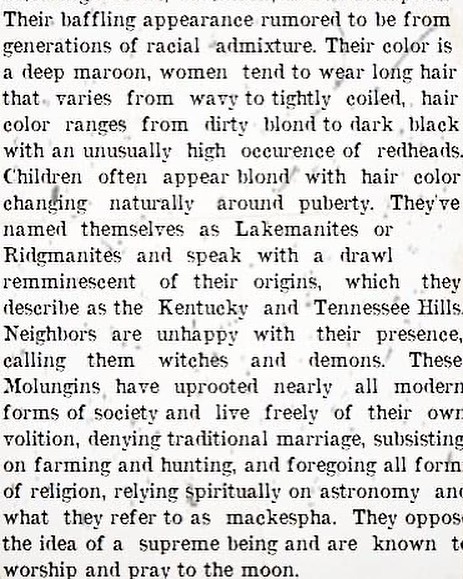
A segment on Melungeons from an Indiana periodical titled “The Colored Visitor” published in 1880. 📰 Describing Melungeon people that settled around the regions of Detroit, Indianapolis, and Cincinnati, it describes our appearance as “A Peculiar People” and our traditional folk belief called Makheshepha, spelled Mackshepa here, which is moon focused. 🌕 💫 Our traditional beliefs have been difficult to document outside of Appalachian Christianity, but articles like these are a great primary source, despite their often problematic and racist angles. #melungeon #machisaba #appalachia #midwest #history #genealogy https://www.instagram.com/p/Cj6LoF-PsIX/?igshid=NGJjMDIxMWI=
5 notes
·
View notes
Text
Folk magic isn't always synonymous with witchcraft.
Most people who practiced faith healing and folk remedies did not call themselves witches. Today, many claimed witches also practice forms of folk and faith healing, but the title is up to the practitioner.
Stop using the term witch to demonize practices, witchcraft isn't always demonic and folk magic isn't always witchcraft.

38 notes
·
View notes
Text
I found a book called “In a Graveyard at Midnight” at a local estate sale and its the only one I’ve ever found besides Yarns My Mammy Spun that has anything about magisaba. I am happy as a pig in a cold mud pit. I guess I been spelling it wrong though.
2 notes
·
View notes
Text
When your soul is heavy and your mind is clouded, it's time to head to the river. The river is a blessed place, and it's perfect for cleansing the soul and mind. Rivers are a common place of baptism in these hills for that reason. The next time you feel like your soul needs an extra boost to push out that negative energy submerse yourself in the cool flowing waters of this sacred mother and clear your mind, let it heal your soul. River water can also be used to cleanse objects and heal ailments like thrush and warts.

34 notes
·
View notes
Text
Contrary to popular belief Mekhashepha =\= Witchcraft. You can be a witch and practice Mekhashepha, you can be not a witch and practice Mekhashepha. It is not a religion, there's no contracts or covenants. In my experience it's just learning to work with the energy of things and the environment around you. Calm down. Quit demonizing your kin just because you don't understand. A lot of us are Christians no less, and are against the witch terminology.
This belief was born in the same sense that the word Melungeon is a slur was born. As Melungeon people we did not call ourselves Melungeon, we called ourselves Ridgemanites and other names denoting where we resided. We did not call out practices Mekheshepha (Machisaba), this is the OT word for a witch or a female sorceress. We were demonized as mixed race and demonized as witches and had our own dialect stripped from us, so we adopted what was given to us. Machashabah similarly is the biblical word for cunning work, or knowing how to use intentions, thought, and prayer to heal.
30 notes
·
View notes
Text
"Mamaw? What makes the red dirt sacred?"
The red dirt was given to us by our ancestors, the great ones. It protects our skin from the sun, it heals wounds, it cures illnesses, it soothes the spirit and it helps guide us through world and afterlife.
Red dirt is often painted on the palms, soles, and face or hair for divination rituals. It is believed that when painted upon the feet it helps us to walk into the spirit worlds and others. Putting it upon the face or head helps us to speak with spirits of the dead as well as sleeping people. On the hands to help us feel what the spirit is feeling. It is painted on the forehead of newborns to guide their souls earthside and on the soles of the dead to ease their walk to the spirit land.
Red dirt is used in many healing remedies, it can be made into a face mask for acne and blemishes, a paste for wounds, and can be consumed to remedy stomach and digestive parasites.
Red dirt is also a very strong protective item. It can be sprinkled outside doorways and around perimeters of the property to ward off any wickedness or ill doers. It can be mixed with animal fat or coconut oil and used as a sun screen to protect the skin from burns.
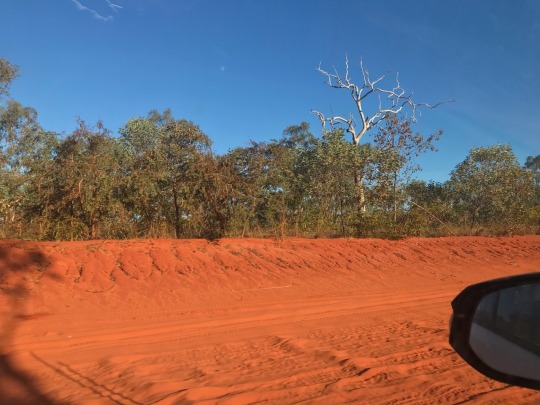
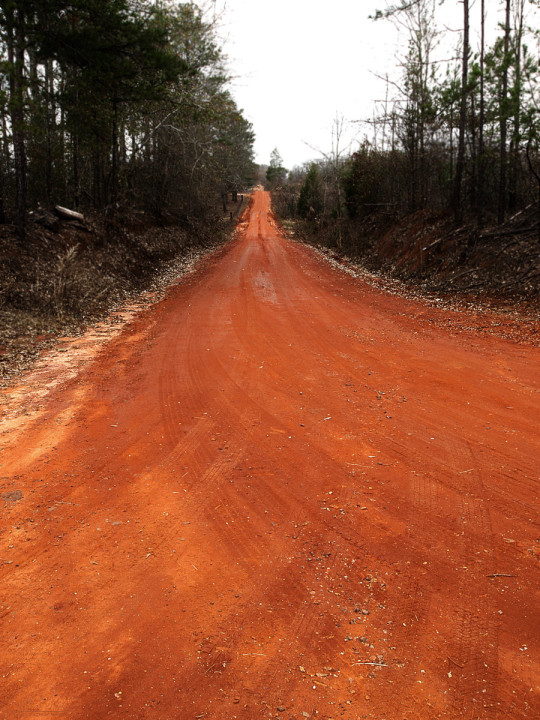
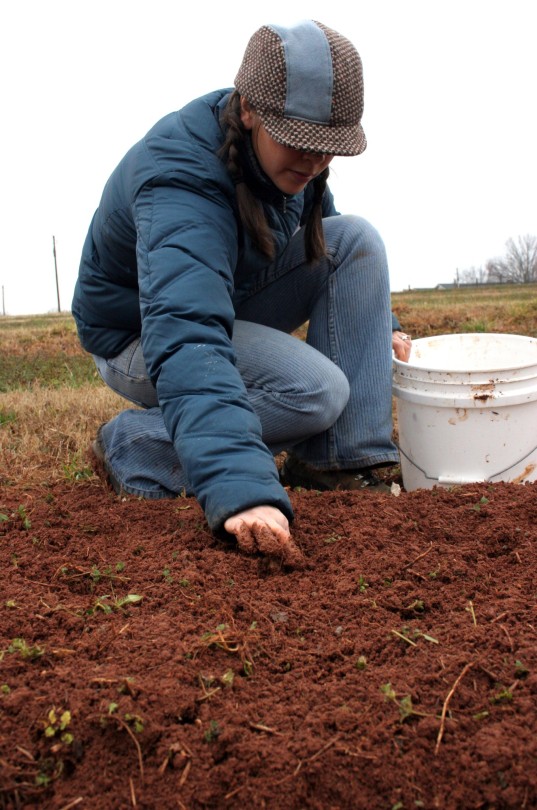
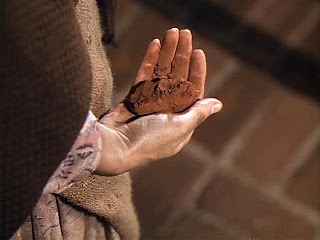
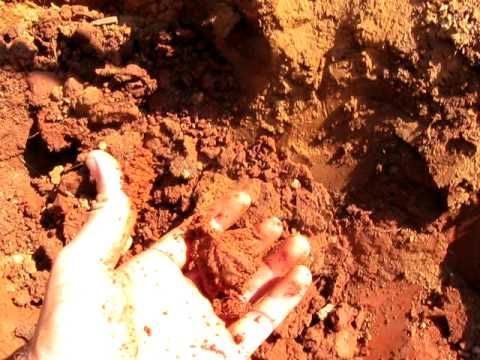

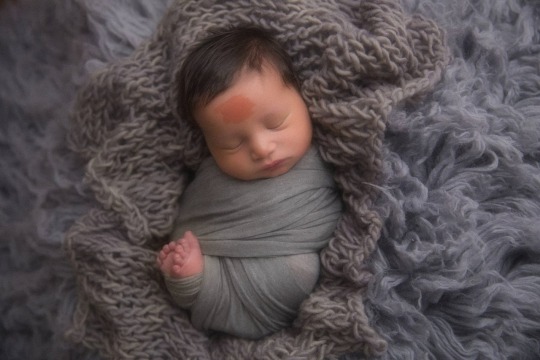

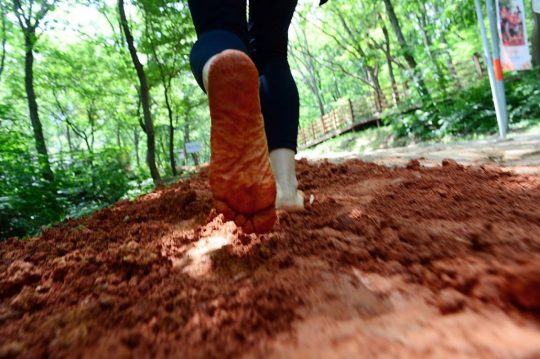
39 notes
·
View notes
Photo

Two more newspaper articles for the end Melungeon Heritage Month! I don’t know the original publication names or the exact dates, but these articles come from two separate newspapers. The first discusses the use of blood beads and grave houses. 🩸 📿 If you’ve read #themooneyedones you’ll know I got the description of blood beads hella wrong 😂. Blood beads are rosary-like strings of yellow-green or amber glass beads believed to cure blood borne illness as they are chanted or prayed over. It was a common practice among Melungeon communities where doctoring was scarce. The second discusses elder Melungeon women speaking in an unknown language while going to pray to the moon in cemeteries at midnight. 🌕 While society generally depicted Melungeons as “witchy,” we did indeed have practices that may have seemed odd or foreign to outsiders. #melungeon #mekhashepha #machisaba #genealogy #appalachia (at Indianapolis, Indiana) https://www.instagram.com/p/CkO1TboPpEZ/?igshid=NGJjMDIxMWI=
6 notes
·
View notes
Note
Can you talk a little bit about blood beads? I have seen them come up lately in groups and am not really understanding.
Sure! You can picture these in your head like a rosary, they are most often made of 88 green and amber glass beads but sometimes you will find blue and turquoise beads as well. Blood beads are a form of repetitive meditative medicine and are used by counting beads and repeating prayer or scripture over each bead. The beads are usually placed over the crown or abdomen of the person ill or conjured during the healing process. They shouldn’t be confused with red corn bead necklaces which were only used for cosmetics.
6 notes
·
View notes
Text
Old Melungeon Gods

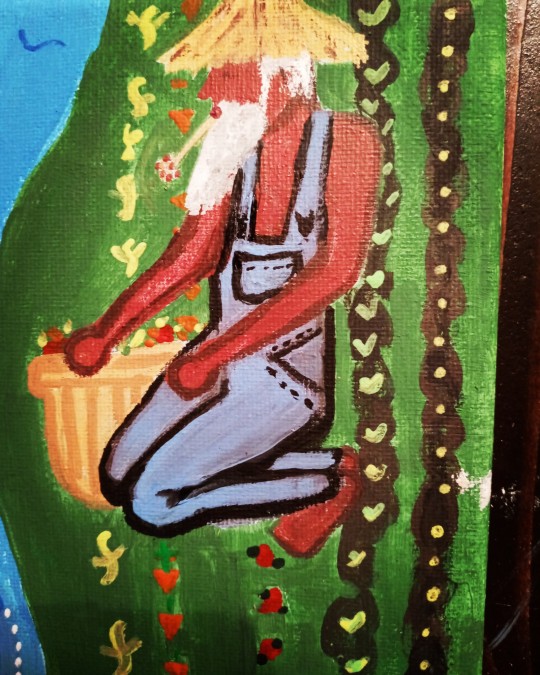
Lotwa, the sacred mother. Spirit of rivers, flowing water, childbirth, pregnancy, and fertility, spring. Helping to create the first humans of flesh with her waters, which she pours from a Roan Jug.
GranddaddyHarvest/Papa Farmer. Spirit of the land, harvest, bountiful harvest, abundance, autumn. Helping to create the first humans of flesh with his red clay. Gave us the gift of farming.
Art by @localhollerhaint
#melungeon#machisaba#appalachia#history#old gods of appalachia#old Melungeon gods#lotwa#sacredmother#granddaddy harvest#folkart#folk art
21 notes
·
View notes
Text

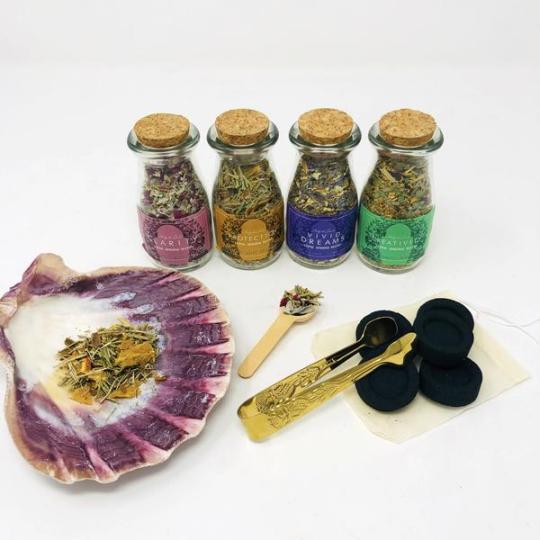

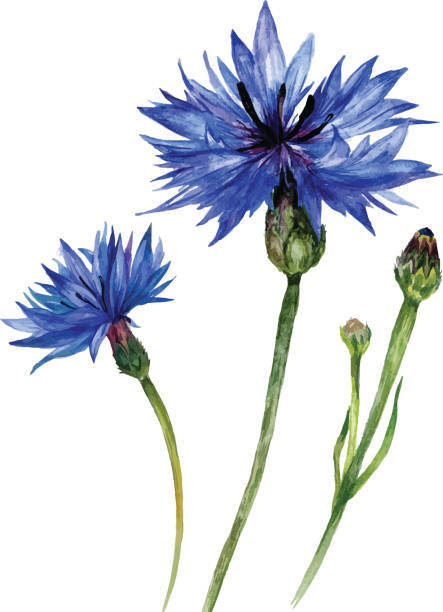

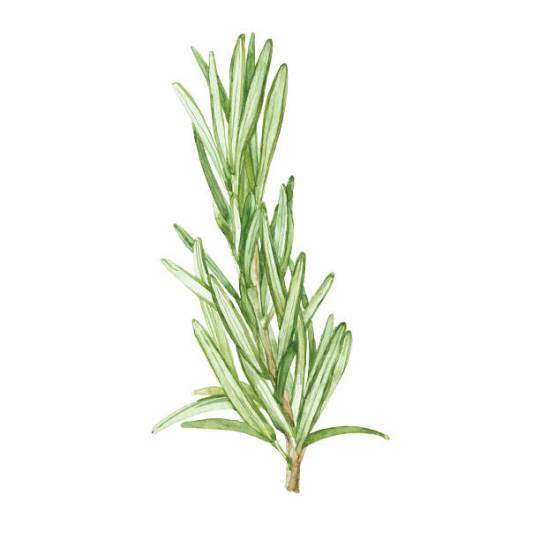

Sultashing/Yashing rituals are commonly used in Machisaba for cleansing of the spirit and cleansing of the home. Dried herbs are placed in a scallops shell and and burned while the smoke is showered over the person or home using a small hand broom tool called a Vahir or Whisk. The herbs used are chosen for their cleansing and protective properties and revered as spiritual medicine.
Herbs used usually include:
Sweet Fern&Rosemary: Used to dispel and cleanse negative energy, crossings, and haints
Cornflower&Lavender: Used to attract good energy, call in ancestral and spiritual guides.
Holy Basil(&sometimes garden sage): Used to protect the home and ward off future crossings, haints, etc.
15 notes
·
View notes
Text
Melungeon Spiritual practices and Machisaba (Mekhashepha)
I won’t be answering anon questions here, but I have had a small influx of people asking about traditional Melungeon beliefs and more spicifically Machisaba. This is a practice that is incredibly hard to research, but many Melungeons and Melungeon descendants have been looking into reconstructing and reconnecting with. Due to the relentless efforts to remain hidden and pass in a world of discrimmination much of these oral histories and practices have been lost to many descendants. From what I have found many Melungeon families assimilated into more socially accepted belief systems like Chritianity, including my own family. However, there are a few families that I’ve spoken with that practice more traditional beliefs or other non-christian religions that they carried on from before assimilation. It seems many melungeon communites practiced a variety of different folk magic practices and religions likely deriving from the different cultures we descended from (we are a heavily mixed race community), one of these practices is known as Machisaba, believed to have evolved from European folk lore, African spiritual practices, and Indigenous beliefs brought together by the communities history of heavy endogamous mixing among the three groups. Machisaba is the only practice that appears to be unique to Melungeon communities and likely was born in the 1700′s in Melungeon communities in the backwoods of Southern Appalachia. (some other spiritual practices found in melungeon families include Hoodoo, Brauchrei, and Curanderismo). It is important to make a note here that most or all of these practices are viewed as closed by those within the communities that practice them and should be respected as closed practice.
Machisaba is a mix of faith and holistic healing practices, conjure, and folk lore. It is a polytheistic belief system that recognizes multiple dieties known as Alma. Machisaba is centered heavily on Ancestor veneration, reincarnation, and animism. Many Machisaba practitioners are known as Vavo(a)’s or Broxo(a)’s and are considered sacred healers and conjure people in their communities. They were historically referred to as cursed souls, witches, and demons by outside communities for their traditions surrounding spiritual events such as death like “sin eating”, or birth ceremonies that invlove painting infants red in ochre. Due to their continued discrimination, many of these practices were held and taught in secret, and kept hidden to protect families from people like Walter Plecker. It is most likely that Machisaba was influenced by our need to survive off the land and mountains we were forced into and being heavily outcast by all white christian communities. Today, most Melungeon people identify spiritually with some branch of Christianity, most commonly Southern Baptism, with mere remnants of Machisaba appearing in passing. Machisaba is by all means, a dying practice, but in recent years the shame that came with being Melungeon has began to lift and Melungeons today are beginning to speak openly about who they are, their history, and their heritage, with many lost Melungeons trying to reconnect and honor their heritage and ancestors while decolonizing their spiritual practices. For the first time in history Melungeons are finally starting to get comfortable learning, reconnecting and practicing our traditional beliefs, and being able to do so openly without losing our homes or rights. Most people who practice Machisaba today are reconstructionists, trying to rebuild what little was left behind by ancestors, and breathe new life into a nearly dead culture.
28 notes
·
View notes
Link
an insightful read!
11 notes
·
View notes
Text
Welcome to the world of Mekhashepha.
This is a spiritual path practised by a small Melungeon community known as Ridgeminites and other Melungeon communities with heavy Jewish influence, it is not practised by all Melungeon communities, but it is not found outside them. More commonly spelled Mekhashepha or Machisaba, it is a folkhealing and conjure craft brought to the Appalachian region by Melungeon peoples. It is historically spelled Mekhashepha or Machashabah, roughly translated from Hebrew, it means witchcraft or cunning work. This blog is for educational purposes only, I do not offer any goods, services, or medical advice. Machisaba should not be used as a replacement for professional health advice.
6 notes
·
View notes
Photo

News articles from 1898 touching on what is likely Machisaba traditions in old Melungeon communities. Traditions surrounding moon worship is still common among many Machisaba practitioners.
5 notes
·
View notes